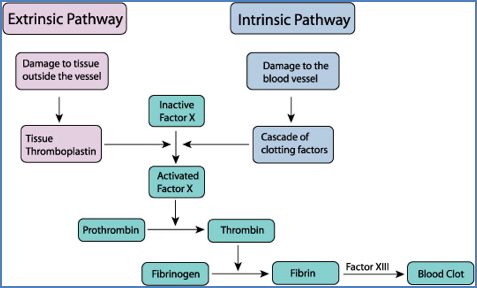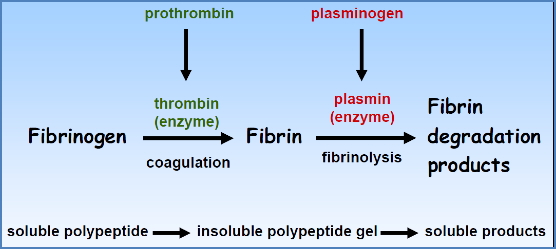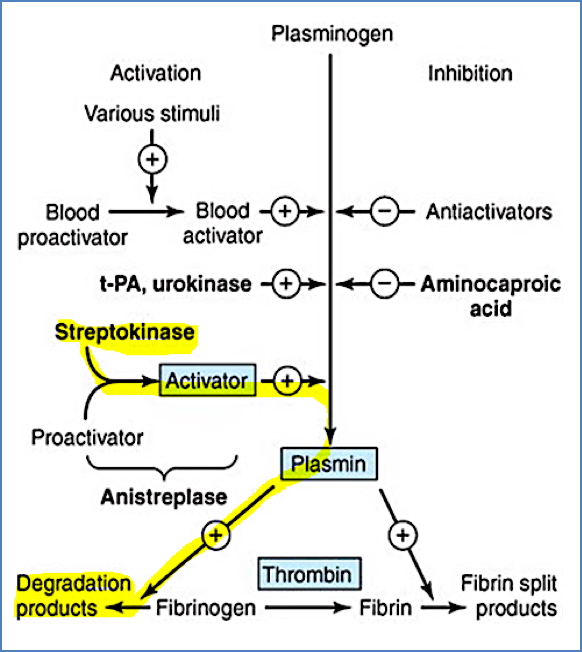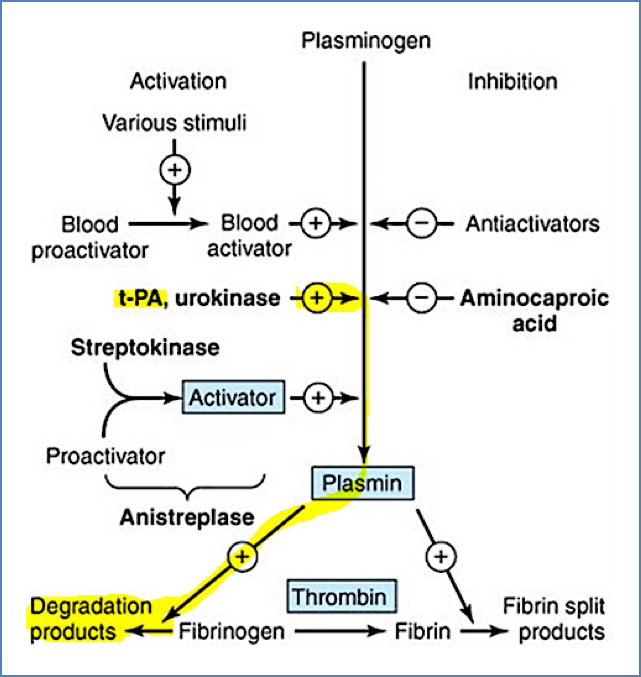Table of Contents
Overview – Thrombolytics
Thrombolytics are fibrinolytic agents used to break down blood clots in acute, life-threatening conditions such as myocardial infarction, stroke, pulmonary embolism, and deep vein thrombosis. Acting by activating plasminogen into plasmin — the key enzyme responsible for fibrin degradation — thrombolytics can rapidly restore blood flow in occluded vessels. Understanding the mechanism, indications, and complications of thrombolytics is critical for final-year medical students preparing for clinical rotations, particularly in emergency and cardiology settings.
Mechanism of Fibrin Formation & Degradation
- Fibrinogen is converted into Fibrin by Thrombin during the coagulation cascade
- Fibrin forms the insoluble scaffold of clots
- Plasminogen is activated to Plasmin, which digests fibrin → Fibrin degradation products
- Thrombolytics accelerate this fibrinolytic pathway




Streptokinase
Mechanism of Action:
- Plasminogen activator (Exogenous)
- Catalyzes conversion of plasminogen → Plasmin
- Plasmin breaks down fibrin → Dissolves clots
Indications:
- Myocardial infarction (MI)
- Pulmonary embolism (PE)
- Acute ischaemic stroke
Side Effects:
- Major risk: Haemorrhage
- Allergic reactions (due to bacterial origin)
Other Info:
- Derived from β-haemolytic Streptococci
- Inhibited by Lipoprotein(a) – a risk factor for MI


Recombinant Tissue Plasminogen Activators (r-tPA)
Includes: Alteplase, Tenecteplase, Reteplase
Mechanism of Action:
- Synthetic version of endothelial tPA
- Converts plasminogen → plasmin
- Plasmin degrades fibrin → clot lysis
Indications:
- MI, PE, DVT
- Stroke (ischaemic only)
- Frostbite – reduces amputations
Side Effects:
- Bleeding (but more clot-specific vs. streptokinase)
- Nausea, vomiting
- Inhibited by Lipoprotein(a)
- Antidote: Aminocaproic acid
Other Info:
- Very expensive
- Short half-life → continuous infusion often required
- Preferred over streptokinase for clot specificity


Summary – Thrombolytics
Thrombolytics are clot-dissolving agents used in the emergency treatment of life-threatening thrombotic conditions such as myocardial infarction, stroke, pulmonary embolism, and DVT. Streptokinase and recombinant tPAs like alteplase work by activating plasminogen to plasmin, which breaks down fibrin. While highly effective, they carry a significant risk of haemorrhage and must be used with caution. For a broader context, see our Blood & Haematology Overview page.